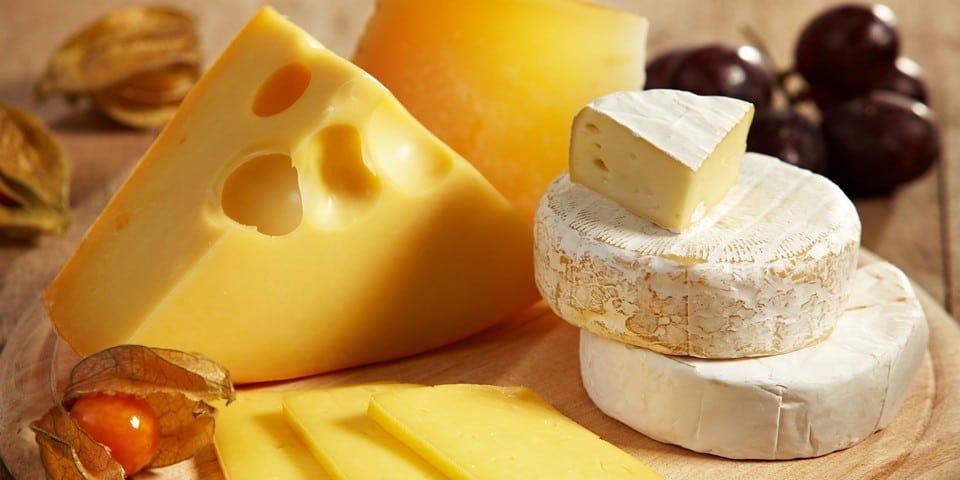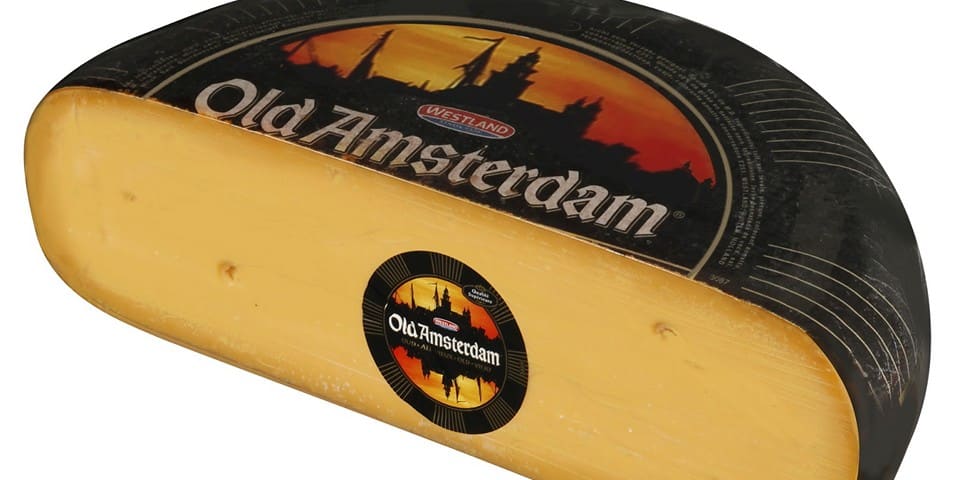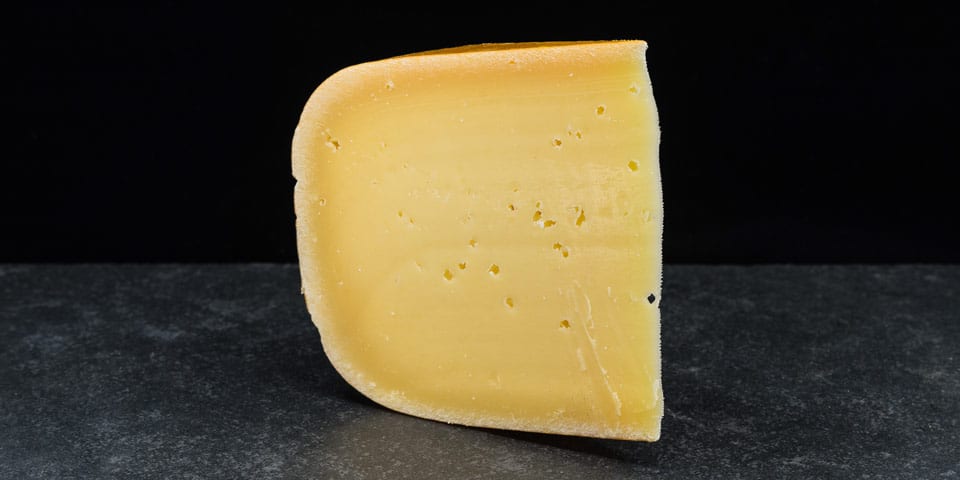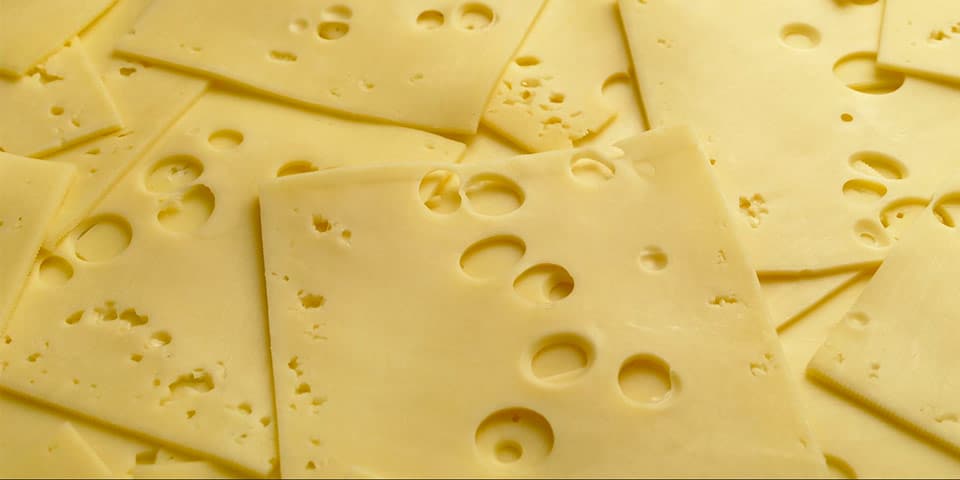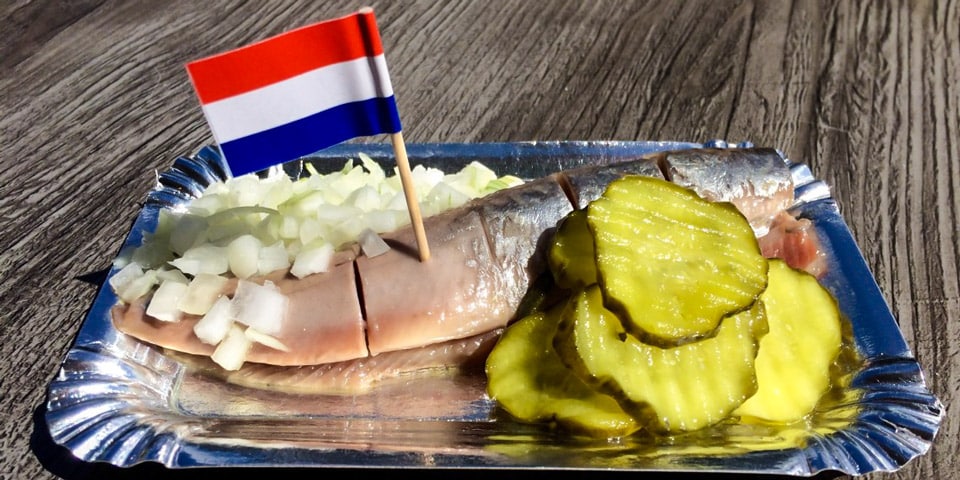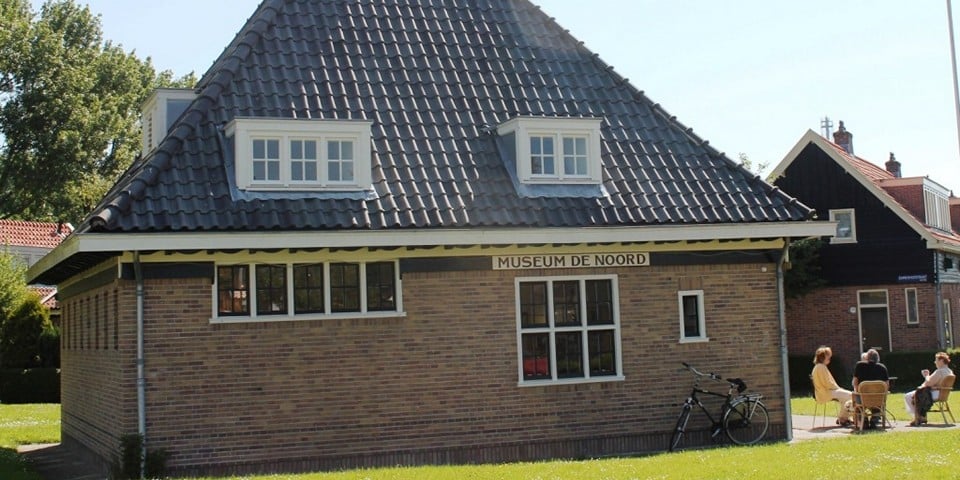What is the first thing that comes to mind when people talk about Holland? Cheese and tulips. The first will be discussed today.
They learned how to make cheese in Holland in the first century BC, having borrowed the know-how from the cheese-makers of Ancient Rome. Subsequently, the students far surpassed their teachers.
To obtain the original taste of the product, the Dutch endlessly selected recipes, additives, aging periods for preparation, brought milk from the northern and western regions and looked for other ways to improve the quality.
The 17th century is characterized by the beginning of rapid trade between European countries, and the Dutch, who had previously supplied the market mainly with spices from the colonies, came up with a new brainchild - cheese. Fresh pastures, cows providing selected milk, colonial spices introduced into the composition have made the taste of the Dutch product unforgettable. The cheese-makers kept the secrets of the recipe behind seven locks. After decades, cheese became the number one product supplied by the country to Europe and other countries of the world. And so it remained in this position: the annual turnover from the export of dairy products, on the 80%, consisting of numerous varieties of this product, is up to 70 billion euros.
TOP 8 best cheeses in Holland
Old Amsterdam
King of cheeses Old Amsterdam from the family of cheeses "Gouda" has its own history and mystery related to its recipe. The keepers of the mystery are the descendants of the famous Westland cheese makers, who managed to produce a product worthy of the royal label koninklijk (Royal). Of all the Dutch cheeses "Old Amsterdam" is the most titled.
It is known that only fresh milk is taken for this variety, and it is aged on shelves for at least 18 months. But the main secret is the cheese leaven.
Heads of grainy Dutch Gouda in a wax coating are aged for a year and a half or more. The resulting cheese has a deep, soft taste with hints of caramel and nuts. Sliced fruits, figs and pistachios are served to complement and enhance the taste of the cheese plate. European sweet mustard is a traditional addition to many aged hard cheeses Edamer, Gouda and Old Amsterdam.
A separate Facebook page is dedicated to this variety: facebook.com/OldAmsterdamCheese, where various recipes for dishes with this cheese are presented.
It is recommended to buy real "Old Amsterdam" in the Old Amsterdam Cheese Store located at Damrak 62, 1012 JS Amsterdam. Here you will find all kinds of varieties of the famous company, whose branches are represented in 67 countries. In addition to the Old Amsterdam variety, the store sells all Westland Cheese cheeses. But it is Old Amsterdam that is called the hallmark of Holland.
Edamer
Tastes are debated when it comes to food and drink. The “Edamer”, first produced in the town of Edam, has been holding the palm among cheeses for a long time. Even before the general enthusiasm of European countries for Dutch products, he stood on a par with French and Italian counterparts. "Edamer" is made from cow's milk, a special fat content is suitable for each type. To achieve hardness, it is aged for at least two months on a wooden rack. In the final form, the "Edamer" head has the appearance of an irregular ball, for which it is appreciated by amateurs.
Gouda
The second step is occupied by the "Gouda"(Goudse), whose name is also associated with the small homeland of this variety. The young product has a delicate creamy aftertaste. With age, Gouda "matures" and is aged up to nine months. Then he acquires a delicate taste, for which he is appreciated all over the world. The finished cheese goes on sale in the form of a cylinder weighing 4.5 kg. This form is considered the best for the aging process. There is another type of "Gouda" - "Dutch master".
Cheese that ripens a year or more is most highly valued by gourmets.
Maasdam
Third place is given to "Maasdam", this variety appeared on the market later, but became the most widespread after the previous two. It was tried and appreciated by Peter I, surprised by the number and shape of holes in the finished product. How do they arise? The movement of bacteria caused by the gas during fermentation leads to the formation of bubbles. They are called "eyes". Since then, the ingredients and percentage of fat content have changed in the Maazdam recipe; in the last century, it was reborn. "Young "by the standards of cheese makers and by the aging period" Maasdam "is considered the most widespread in the importing countries.Large round holes have become the brand of this variety.
Old dutch master
Literally the name means "Old Dutchman". This is a premium product for the most fastidious gourmets. He has been aging for over a year. Bright spices and delicate creamy aroma made him the real King of cheeses. In 2004, an anniversary cheese competition was held in the state of Wisconsin (USA). The selection was carried out in several dozen categories and among almost one and a half thousand applicants "Old Dutchman" from the company "Frisland Foods Cheese" was recognized as the world champion. The imprint of the Golden Seal on the surface of the wrapper proves his chosenness. And the manufacturing company "Frisland Foods Cheese" has long been included in the top ten cheese-making companies in the world.
Bemster
The people of the Netherlands themselves give him his due. Cheese is made from unprocessed cow's milk, which is why it has a peculiar taste of meadow grasses.
Almost unknown outside Holland, this species is very popular with the Dutch themselves. "Bemster" comes from the north of the country, where nature itself has created the best pastures for livestock due to the proximity of the sea and the composition of the soil containing blue clay. Thanks to this combination, milk and cheese taste sweeter and softer than those produced in other regions. The Dutch argue about how best to serve Beemster: separately from other food so that the aroma does not clog, or with a good dry red wine.
Leidse
Fans of spicy taste prefer products created in the vicinity of Leiden. Semi-hard cheese is made from skimmed skim milk and includes cloves and caraway seeds, for which it was named komijnekaas (literally "caraway"). This is how he is usually asked in supermarkets.
Burenkaas
This is a "farmer's favorite", the recipe of which the manufacturer patented and revealed over time. It tastes like the popular Gouda. Burenkaas contains only raw milk, which adds a juicy herb flavor to the product. The Burenkaas head is a pressed circle.
In the center of Amsterdam, you can taste a delicacy and buy it as a present in the supermarkets Dirk, Henri Wilig and Albert Heijn. But in a specialized supermarket at De Kaaskamer, Runstraat 7, Canal Ring, you see the widest choice of offers from Dutch producers according to visitors - up to 440 varieties. Free tasting is timed to 12 noon, but you have to stand in a long line.
Museum in Amsterdam
A favorite tourist attraction in the capital of the Netherlands is the Cheese Museum, located in a small basement at Prinsensрracht 112, 1015 EA.
If you've visited the Anne Frank House, the Cheese Museum is easy to find by walking down the waterfront and across to the opposite side of the canal. An adjacent door leads to the tulip house, so the visitor gets another bonus.
In the museum, try the offered varieties of cheese products produced in Holland; empty trays are immediately replaced with full ones. For lovers of additional sauces and spices, visitors choose and buy their favorite combination here. Prices in the Museum are lower than in supermarkets and shops located closer to the center. For buyers, the heads are compactly packaged in shape and weight. And the memory of visiting such a place will remain for a long time.
Tasting in amsterdam markets and cheese rooms
To plunge into the Middle Ages and taste the peasant cheese at the same time, visit the markets in the cities of Alkmaar, Gouda or Edam, where the atmosphere of a typical medieval shopping center is recreated, and dairy products are sold in separate rows by flowering milkmaids in typical Dutch caps and snow-white aprons with frills. In the markets for your purchase, according to the old Dutch tradition, they will vigorously slap their hands - the buyer must not only see, but also feel the aroma of the product.
In addition to markets, you can taste product varieties in the special rooms of the Reypenaer Cheese Tasting Room. And at the same time and satisfy hunger. Various varieties are served in these rooms:
- From cow and goat milk;
- Fused and hard;
- Young and old;
- Specific species containing paprika, chili and truffle flavorings.
When tasting in Holland, it is customary to serve soft European mustard with the "main course" - this creates an unusual flavor bouquet.
Tasting at dairy farms
To explore the making of cheese from cow's milk, visit it yourself or with a tour and guide looking for nearby farms. You will see the process with your own eyes. First, get acquainted with a dozen cows on a farm served by one married couple (the barn does not smell of familiar smells), then visit the cheese-making and cheese-making workshop itself, where you will be allowed only in dressing gowns, shoe covers and hair caps.
Unlike dummies in museums, here you will see the complete process of fermenting milk with rennet and lactic acid bacteria in a wooden jug. This is how cottage cheese is obtained. For hard varieties, the mass is crushed until chunks are obtained, which will make the cheese denser. The cheese mass is heated to 50 degrees, stirring constantly. Herbs and spices, coloring agents and salt are added to the mass at this stage. Salt improves the taste and increases the shelf life of the product. At this point, the cheese had already acquired a yellow color due to the carotene content in the milk of the cow. But some species add another natural color called annato, derived from the tropical plant Bixa orellana.
Then the curd is divided into pieces, shaped and placed in special cylinders for shaping. It is the turn of squeezing: excess liquid is removed from the dense curd mass using a press and the result is a traditional round shape, called a "head". At the end of the process, the heads float freely in a large bath.
Cheeses ripen on wooden shelves. Young, soft, up to 4 months old varieties are placed on racks outside. The second rows are occupied by heads with aging up to one year. On the upper shelves, two-year-old dense bright yellow circles ripen. Cheese makers call the period of waiting for full readiness the process of rest.
Wine, in addition to being an ideal match for cheese, serves as a natural preservative. The traditional method in some farms: for long-term storage of the head, a bottle of wine is placed in it with its neck upside down.
In the cheese-making shop, ready-made heads are cut into 2x2 cm2 cubes right there with you and placed in trays covered with transparent lids. There is a framed price list on the wall, which is frankly pleasing. After the tour in English (they are not conducted in Russian), you will definitely buy a head or a piece of cheese home and as a gift.
Goat milk products
Cheeses made from goat's milk, in the Netherlands, are less popular than those made from cow's. But connoisseurs appreciate them precisely for their specific smell and aftertaste. Like dairy, goats are divided into young, matured and old. And in terms of composition, they are traditional and flavored. Despite new technologies, they do not include anything other than natural - only milk, salt and spices. In addition to the division into young and old, there are also goat cheeses extra aged or VSOP (aged for at least two years). VSOP tastes like spicy parmesan, and the specific smell is no longer felt in it. It is customary to add to such varieties:
- Italian herbs;
- Meadow nettle;
- Honey;
- Olives;
- Sun-dried tomatoes;
- Coriander;
- Shambhala.
The last two ingredients bring a light bready and mushroom flavor, for which it is appreciated by the residents of Holland and guests.
7 interesting facts about cheese
- Homer was the first to describe how cheese is made. The Odyssey claims that the valuable product originated in Egypt.
- The Greeks argued that the goddess Artemis treated the gods to cheese, and with her "feed" the inhabitants of Olympus appreciated the product during all kinds of feasts, while drinking wine. Hephaestus, who favored earthlings, presented the recipe to the inhabitants of the island of Crete. In gratitude, the Greeks brought tribute to the gods in the form of cheese heads.
- During the Roman Empire, separate kitchens were set aside for the manufacture of the "magic product" in the houses.
- Peter the Great, who fell in love with cheese while studying shipbuilding in the Dutch city of Saardam, made this product fashionable in Russia.
- Edamer received a spherical shape not only because of the convenience of transportation on sailing ships. During clashes with pirates in the Caribbean, the cheese heads were used as cannon balls.
- Today, there are 2,000 cheese varieties in the world, and the profits from the sale of the cheese delicacy exceed the profits from the global sales of coffee, tobacco, tea and cocoa beans combined.
- For her services to the state in the field of cheese making, Queen Beatrix of the Netherlands granted FRICO the right to add the word "Royal" to the name of its products.
In conclusion. Do not buy a young, spicy-smelling variety for a long journey; passengers on a train or bus, by agreement, will easily throw out a souvenir at the nearest stop. Think of Jerome K. Jerome and Three Men in One Boat and don't torture your neighbors.
